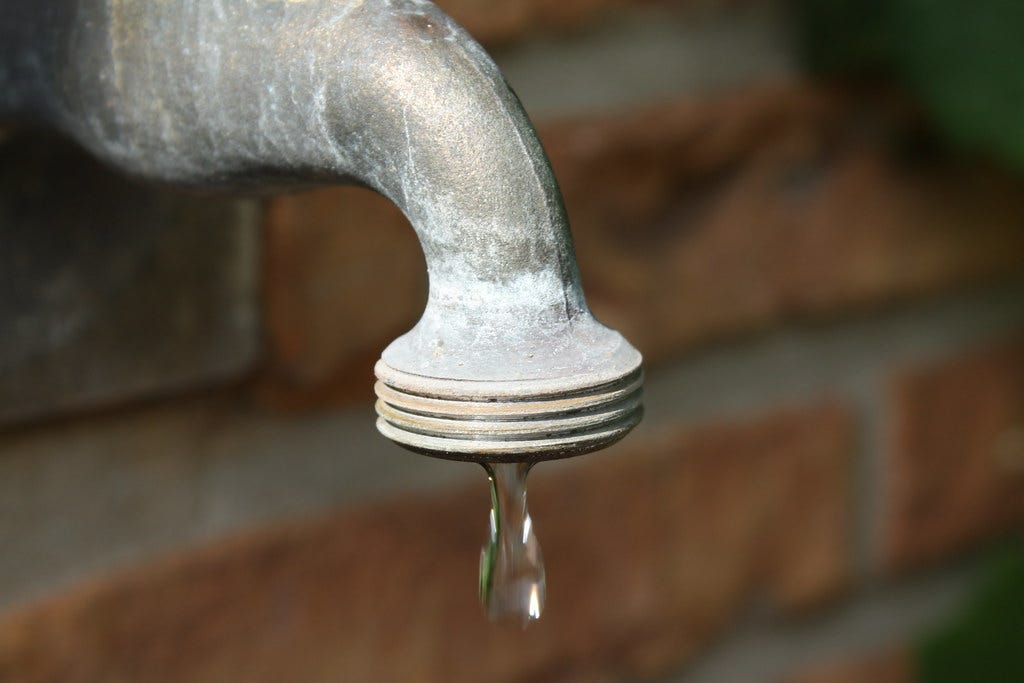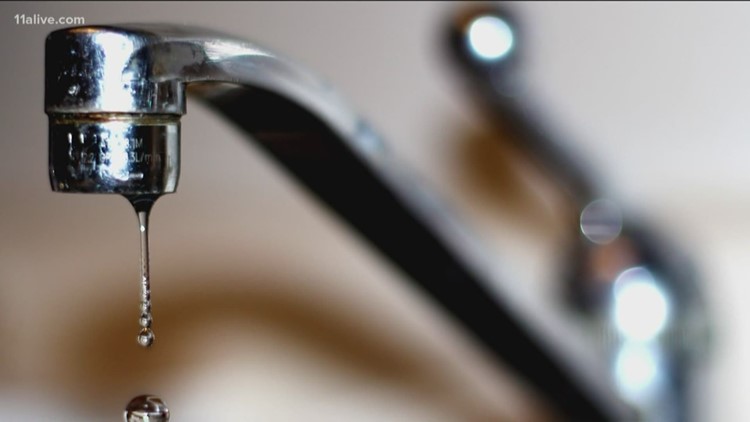Our Effects of Dealing with a Busted Faucet
Our Effects of Dealing with a Busted Faucet
Blog Article
What're your insights and beliefs on The Environmental Impact of Leaky Faucets?

Intro
A leaky faucet could appear like a minor nuisance, but its repercussions extend far past the occasional drip. Comprehending the results of a leaking tap is crucial for both house owners and the environment. In this short article, we'll check out the different influences of this usual household problem and why resolving it quickly is necessary.
Sources Of Leaky Faucets
Dripping faucets can result from a variety of variables, consisting of wear and tear, high water stress, and deterioration. Over time, the continuous use of faucets can result in worn-out seals and gaskets, causing leakages to create. Furthermore, extreme water pressure can put pressure on plumbing components, resulting in leaks. Deterioration and corrosion can also weaken tap elements, making them vulnerable to leakage.
Water Wastefulness
Among the most substantial repercussions of a dripping faucet is water wastage. Even a tiny drip can add up to gallons of drainage gradually. This not just drives up water costs but also adds to water scarcity and environmental destruction. Dealing with leaking taps quickly is vital for conserving this precious source and decreasing its impact on the planet.
Financial Effect
Along with drainage, dripping taps can also have a substantial financial impact. Increased water bills are a direct consequence of water wastage, costing property owners numerous bucks annually. Furthermore, the expense of fixing water damage triggered by leaks can be substantial, especially if left unattended for an extensive duration.
Environmental Impact
The ecological effect of leaky taps prolongs beyond water wastefulness. By saving water, property owners can contribute to more comprehensive efforts to mitigate water shortage and protect all-natural communities. Lasting options such as rain harvesting and water-efficient fixtures can better minimize the environmental footprint of home water use.
Technological Solutions
Improvements in technology have actually brought about the advancement of smart faucets and water-saving devices that aid minimize water waste. Smart taps make use of sensing units to spot movement and change water circulation as necessary, lowering waste without sacrificing convenience. Water-saving devices such as aerators and low-flow showerheads are also effective in conserving water without compromising performance.
International Viewpoints
While dripping taps may look like a localized concern, they add to wider global challenges such as water deficiency and environment change. In areas currently facing water stress, every decline counts, making leak avoidance and repair work essential. By taking on water-saving practices and buying sustainable modern technologies, house owners can play their part in resolving these pressing worldwide concerns.
Regulative Actions
Government guidelines play a crucial function in minimizing the impact of leaky faucets and promoting water preservation. From constructing codes that call for water-efficient fixtures to water-saving incentives and refunds, policymakers have a variety of devices at their disposal. By applying and applying these regulations, governments can ensure that homeowners prioritize water conservation in their daily lives.
Area Influence
Resolving leaky faucets calls for cumulative efforts at the community degree. By elevating understanding about the relevance of water preservation and offering resources for leakage detection and fixing, regional authorities can empower home owners to act. Campaigns such as water-saving refund programs and leakage detection projects can incentivize behavior adjustment and promote liable water usage.
Instance Studies
Real-life examples of the effect of dripping taps emphasize the value of proactive upkeep and prompt repair services. From water damage to escalating water costs, the consequences of ignoring leakages can be extreme. By sharing these study, property owners can much better understand the relevance of addressing leaking taps without delay.
Educational Campaigns
Educational campaigns play a critical function in raising recognition concerning the results of dripping taps and advertising water conservation techniques. With workshops, seminars, and online resources, homeowners can discover just how to discover and fix leaks themselves. By empowering people with expertise and tools, instructional campaigns can promote a culture of liable water usage within communities.
Health Worries
Leaking faucets can develop favorable environments for mold and mildew and mildew development, presenting health threats to owners. The existence of mold and mildew can worsen respiratory problems and allergies, especially in susceptible people. Furthermore, water damage arising from leaks can endanger the architectural integrity of structures and result in pricey repair work.
Do it yourself vs. Professional Repair service
When confronted with a dripping faucet, house owners usually discuss whether to attempt fixings themselves or hire an expert plumber. While DIY repair work can save cash, they might not constantly resolve the underlying issue effectively. Professional plumbings have the competence and equipment to diagnose and fix leakages properly, guaranteeing long-term remedies and comfort for property owners.
Preventive Measures
Protecting against leaking faucets calls for normal upkeep and proactive actions. Basic tasks such as changing damaged washers and seals can prevent leakages from developing. In addition, updating to high-quality fixtures and minimizing water stress can aid lengthen the life-span of taps and decrease the threat of leakages.
Verdict
Finally, the results of a dripping tap prolong far beyond the occasional drip. From water wastefulness and raised water expenses to health and wellness issues and ecological effect, the repercussions of disregarding leakages can be considerable. By addressing leaking faucets promptly and embracing water-saving techniques, homeowners can minimize these impacts and contribute to an extra lasting future.
Why You Shouldn’t Ignore a Leaky Faucet in Your Home
What Causes a Leaky Faucet?
Various factors can cause a leak, from loose and worn-out parts to corrosion. Your faucet has four essential components from which most plumbing issues will stem: the O-ring, the valve seat, the washer and the gasket.
What Is an O-Ring?
The O-ring is a stem screw that fastens parts of the faucet in place, preventing water from leaking out of the spout. Depending on your faucet type, the stem might have multiple O-rings. Water will drip from the faucet’s handles and base if this part breaks or deteriorates.
What Is a Valve Seat?
The valve seat controls the flow and temperature of the water. Found at the base of the handle, it works as a seal for the faucet’s stem. The valve seat ensures the water is allowed to flow or is blocked as the handles dictate. You’ll know it’s malfunctioning when water leaks from your faucet’s sides.
What Is a Gasket?
The gasket is found between the water inlet and the valve stem. It creates a seal between the faucet and the sink, holding its joints by aerators attached to the stem’s head. Water will trickle out from the base if the gasket isn’t working.
What Is a Washer?
The washer secures the handles and prevents leakage, serving a similar purpose to the O-ring. While the O-ring is ordinarily round and made from an elastic material, such as rubber, the washer is square-shaped and composed of brass, copper and other hard metals. If it malfunctions, corrodes or has been improperly installed, water will leak out of the handles, causing that incessant faucet drip.
Why Is a Leaky Faucet Dangerous?
A leaky faucet left alone for too long can have significant consequences.
Pest Infestations
Since bugs and rodents gravitate towards the scent of water, a leaky faucet will draw pests to your sink. Both are looking for leaks accessible through crawl spaces, which a faucet provides. If you leave water dripping for too long, you run the risk of an infestation.
Rust
If one of the faucet parts has started to corrode, the resulting rust can spread to your pipes and valves with startling speed. The rust might even lead to cracks or other impairments, resulting in more severe plumbing issues.
Your sink could also sustain damage from a leaky faucet. The water in your tap possesses sparse elements of calcium and iron that can stain your sink with repeated and prolonged exposure. Once those elements in the water have been open to the air for some time, your sink will start to rust, creating marks that can be difficult to remove.
https://www.tomsmechanical.com/blog/why-you-shouldnt-ignore-a-leaky-faucet-in-your-home

I'm certainly very intrigued by How to Fix a Leaky Faucet and I'm hoping you enjoyed the post. For those who enjoyed our article kindly remember to share it. I thank you for your readership.
Report this page